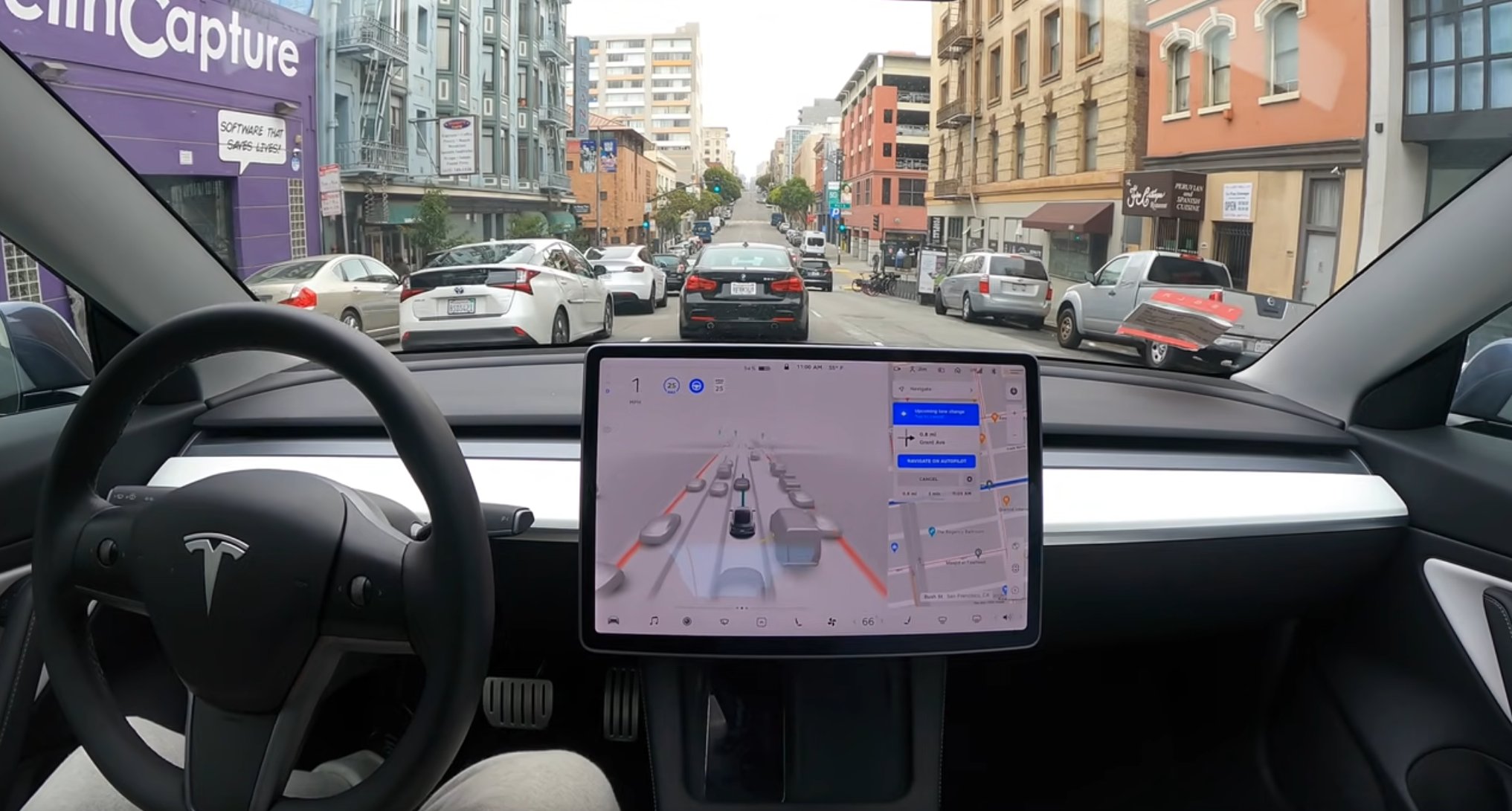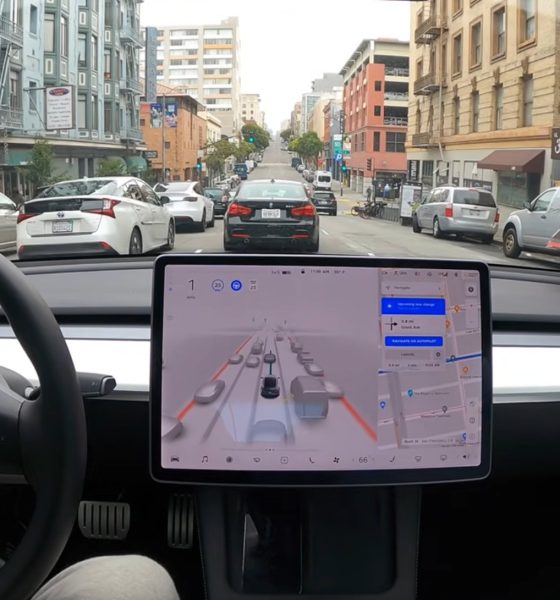

News
Opinion: Tesla Autopilot NHTSA investigation headlines are out of control
There is a difference between slant and straight-up inaccuracy. Slant is unavoidable as it typically relies on a writer’s personal biases. Making connections that could be immediately debunked with the slightest modicum of research, however, is completely avoidable. This was exactly the case on Monday as a wave of negative Tesla news emerged following an announcement that the NHTSA is launching a formal investigation on Autopilot over 11 incidents that involved Teslas crashing into parked emergency vehicles.
The NHTSA Investigation
The NHTSA’s ODI Resume was very brief and direct. And while the agency did state that it would be evaluating Autopilot for Model S, Model 3, Model X, and Model Y from model year 2014 to 2021, the NHTSA did note that its investigation would involve 11 incidents in the United States. These incidents resulted in 17 injuries and one fatality.
Tesla prides itself on being a company that focuses intently on the safety of its vehicles, and in this light, investigations that would make systems like Autopilot ultimately safer for the general public would likely be welcomed by the company. Elon Musk, after all, has posted in the past that he agrees with the NHTSA “99.9% of the time.” The Tesla CEO has also specified on Twitter that he thinks the “NHTSA is great.”
If one were to look at the coverage of the investigation in some mainstream media outlets, however, one would think that things are far more dire.
The Coverage and Missing Details
It is true that negative stories attract more eyeballs. This is something that has been true even before the days of online journalism. And in this landscape, a company led by a rebel CEO that no longer issues comments on issues is the perfect target. This could be seen in the headlines that immediately followed the NHTSA” s announcement. CNN’s headline, “Tesla is under investigation because its cars can’t stop hitting emergency vehicles,” is a great example of this. It’s sensationalist and it suggests that the issue being investigated by the NHTSA is something extremely grave. And this is just one outlet.
Other news outlets such as CNBC proceeded to feature Ford former Co-CEO Mark Fields, who proceeded to highlight that the NHTSA’s investigation covers Teslas from a large time period. Persistent Tesla bears were also featured for their take on the news despite their past accuracy on the EV maker.
Interestingly enough, one of the things that were not mentioned much (if at all) in the general coverage of the NHTSA Autopilot investigation was the state of the drivers in some of the incidents. As aggregated by some Tesla watchers online, a good number of the drivers in the 11 crashes were hardly the most attentive. Two incidents were deemed as DUI cases, for example, and one driver had a suspended license. Four cases involved driver inattention, with one incident having a driver who did not have their hands on the wheel for 3 minutes 41 seconds. The other four incidents have no police report readily available.
An Unrelated Incident
On the same day as the NHTSA announced its investigation, a Tesla Model 3 was involved in a car crash at a school parking lot in the UK, injuring six people. It did not take long before Reuters, citing a report from The Telegraph, ran with a headline which read “Six injured as self-driving Tesla crashes in school car park in Southern England – Telegraph.” Such a headline immediately raised red flags, the first being that no Teslas owned by consumers today are “self-driving” cars per se. They have advanced driver-assist features, but those still require constant attention.
This headline grabbed a lot of attention — that much was no surprise. What was unfortunate was that as it became clear that the Tesla involved in the incident could not be a “self-driving” car, Reuters proceeded to issue a retraction on the article, stating that it had updated the story to correct the headline and drop the “self-driving” reference. The publication, however, kept a section of the article which still stated that it remained to be seen if the Tesla that injured six people had a driver behind the wheel at the time of the incident.
The Perfect Target
Tesla is no stranger to negative reporting, and that’s to be expected. Some negative slant from a reporter covering news about the company is pretty understandable, after all. However, it becomes a bit more difficult to justify errors such as those committed by Reuters about the UK incident. Even a little research on the features of a Model 3 in Europe would show that there are no “self-driving” Teslas right now, after all, and narratives which seem to hint at rogue electric cars are ultimately just as fantastical as they are inaccurate.
This may not be Tesla’s first rodeo with false news, but it’s not like there is nothing that could be done. Tesla China, for example, has adopted an assertive external relations and legal campaign that pursues false reporting on Giga Shanghai, and it has worked to great effect. Whether a similar strategy would work in the United States is up for question, but there seems to be few reasons remaining why Tesla should just allow itself to be a punching bag for misinformation without even airing its side.
Don’t hesitate to contact us with news tips. Just send a message to tips@teslarati.com to give us a heads up.

News
Tesla FSD fleet is nearing 7 billion total miles, including 2.5 billion city miles
As can be seen on Tesla’s official FSD webpage, vehicles equipped with the system have now navigated over 6.99 billion miles.

Tesla’s Full Self-Driving (Supervised) fleet is closing in on almost 7 billion total miles driven, as per data posted by the company on its official FSD webpage.
These figures hint at the massive scale of data fueling Tesla’s rapid FSD improvements, which have been quite notable as of late.
FSD mileage milestones
As can be seen on Tesla’s official FSD webpage, vehicles equipped with the system have now navigated over 6.99 billion miles. Tesla owner and avid FSD tester Whole Mars Catalog also shared a screenshot indicating that from the nearly 7 billion miles traveled by the FSD fleet, more than 2.5 billion miles were driven inside cities.
City miles are particularly valuable for complex urban scenarios like unprotected turns, pedestrian interactions, and traffic lights. This is also the difference-maker for FSD, as only complex solutions, such as Waymo’s self-driving taxis, operate similarly on inner-city streets. And even then, incidents such as the San Francisco blackouts have proven challenging for sensor-rich vehicles like Waymos.
Tesla’s data edge
Tesla has a number of advantages in the autonomous vehicle sector, one of which is the size of its fleet and the number of vehicles training FSD on real-world roads. Tesla’s nearly 7 billion FSD miles then allow the company to roll out updates that make its vehicles behave like they are being driven by experienced drivers, even if they are operating on their own.
So notable are Tesla’s improvements to FSD that NVIDIA Director of Robotics Jim Fan, after experiencing FSD v14, noted that the system is the first AI that passes what he described as a “Physical Turing Test.”
“Despite knowing exactly how robot learning works, I still find it magical watching the steering wheel turn by itself. First it feels surreal, next it becomes routine. Then, like the smartphone, taking it away actively hurts. This is how humanity gets rewired and glued to god-like technologies,” Fan wrote in a post on X.
News
Tesla starts showing how FSD will change lives in Europe
Local officials tested the system on narrow country roads and were impressed by FSD’s smooth, human-like driving, with some calling the service a game-changer for everyday life in areas that are far from urban centers.

Tesla has launched Europe’s first public shuttle service using Full Self-Driving (Supervised) in the rural Eifelkreis Bitburg-Prüm region of Germany, demonstrating how the technology can restore independence and mobility for people who struggle with limited transport options.
Local officials tested the system on narrow country roads and were impressed by FSD’s smooth, human-like driving, with some calling the service a game-changer for everyday life in areas that are far from urban centers.
Officials see real impact on rural residents
Arzfeld Mayor Johannes Kuhl and District Administrator Andreas Kruppert personally tested the Tesla shuttle service. This allowed them to see just how well FSD navigated winding lanes and rural roads confidently. Kruppert said, “Autonomous driving sounds like science fiction to many, but we simply see here that it works totally well in rural regions too.” Kuhl, for his part, also noted that FSD “feels like a very experienced driver.”
The pilot complements the area’s “Citizen Bus” program, which provides on-demand rides for elderly residents who can no longer drive themselves. Tesla Europe shared a video of a demonstration of the service, highlighting how FSD gives people their freedom back, even in places where public transport is not as prevalent.
What the Ministry for Economic Affairs and Transport says
Rhineland-Palatinate’s Minister Daniela Schmitt supported the project, praising the collaboration that made this “first of its kind in Europe” possible. As per the ministry, the rural rollout for the service shows FSD’s potential beyond major cities, and it delivers tangible benefits like grocery runs, doctor visits, and social connections for isolated residents.
“Reliable and flexible mobility is especially vital in rural areas. With the launch of a shuttle service using self-driving vehicles (FSD supervised) by Tesla in the Eifelkreis Bitburg-Prüm, an innovative pilot project is now getting underway that complements local community bus services. It is the first project of its kind in Europe.
“The result is a real gain for rural mobility: greater accessibility, more flexibility and tangible benefits for everyday life. A strong signal for innovation, cooperation and future-oriented mobility beyond urban centers,” the ministry wrote in a LinkedIn post.
News
Tesla China quietly posts Robotaxi-related job listing
Tesla China is currently seeking a Low Voltage Electrical Engineer to work on circuit board design for the company’s autonomous vehicles.

Tesla has posted a new job listing in Shanghai explicitly tied to its Robotaxi program, fueling speculation that the company is preparing to launch its dedicated autonomous ride-hailing service in China.
As noted in the listing, Tesla China is currently seeking a Low Voltage Electrical Engineer to work on circuit board design for the company’s autonomous vehicles.
Robotaxi-specific role
The listing, which was shared on social media platform X by industry watcher @tslaming, suggested that Tesla China is looking to fill the role urgently. The job listing itself specifically mentions that the person hired for the role will be working on the Low Voltage Hardware team, which would design the circuit boards that would serve as the nervous system of the Robotaxi.
Key tasks for the role, as indicated in the job listing, include collaboration with PCB layout, firmware, mechanical, program management, and validation teams, among other responsibilities. The role is based in Shanghai.
China Robotaxi launch
China represents a massive potential market for robotaxis, with its dense urban centers and supportive policies in select cities. Tesla has limited permission to roll out FSD in the country, though despite this, its vehicles have been hailed as among the best in the market when it comes to autonomous features. So far, at least, it appears that China supports Tesla’s FSD and Robotaxi rollout.
This was hinted at in November, when Tesla brought the Cybercab to the 8th China International Import Expo (CIIE) in Shanghai, marking the first time that the autonomous two-seater was brought to the Asia-Pacific region. The vehicle, despite not having a release date in China, received a significant amount of interest among the event’s attendees.








